High ceilings have become a statement piece in homes and apartments across the nation, and buyers have responded. The National Association of Home Builders conducted a survey in which 67 percent of respondents in 2018 said they would be willing to pay more money for ceilings higher than 8 feet on the first floor of their home — and with the percentage steadily increasing over the past few years, it’s clear that high ceilings are a great addition to any home.
With so many different benefits, high ceilings can become the selling-point of the home. Here are some benefits involved with designing a home around high ceilings:
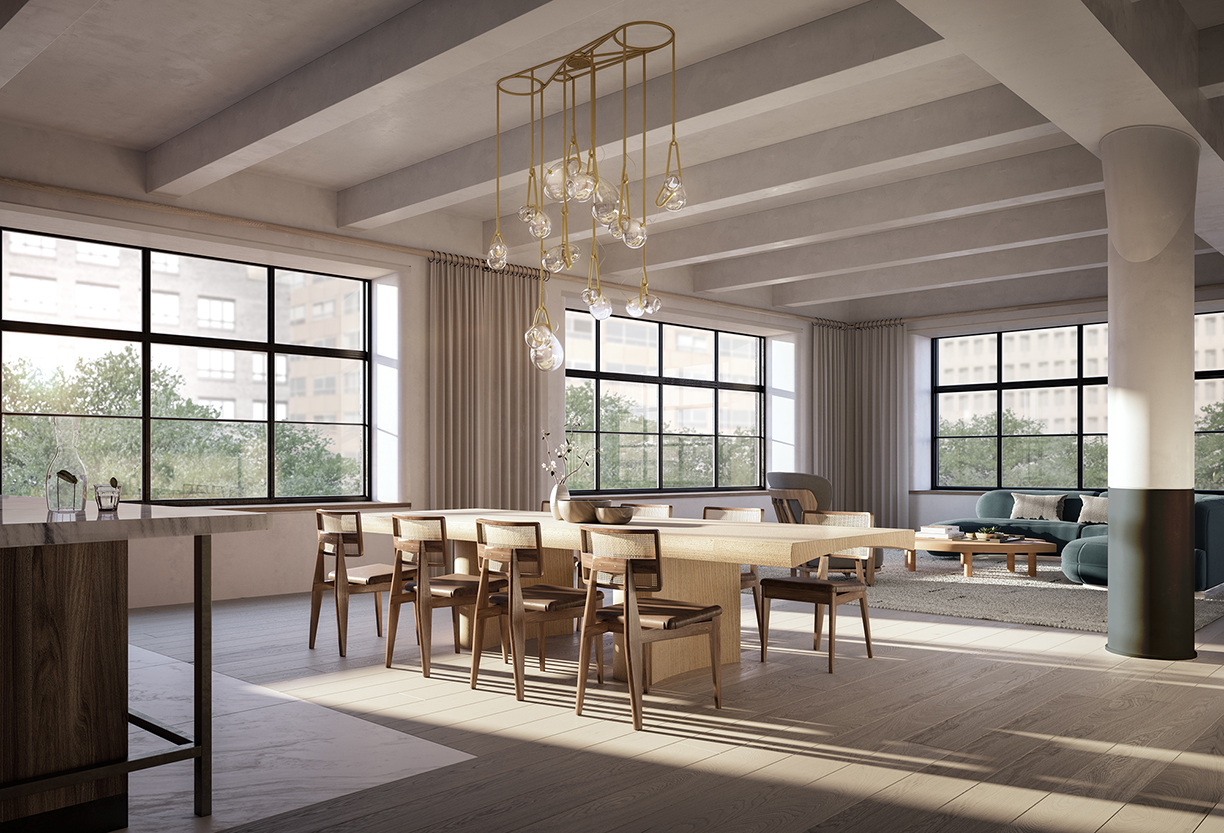
Photo courtesy of 90 Morton
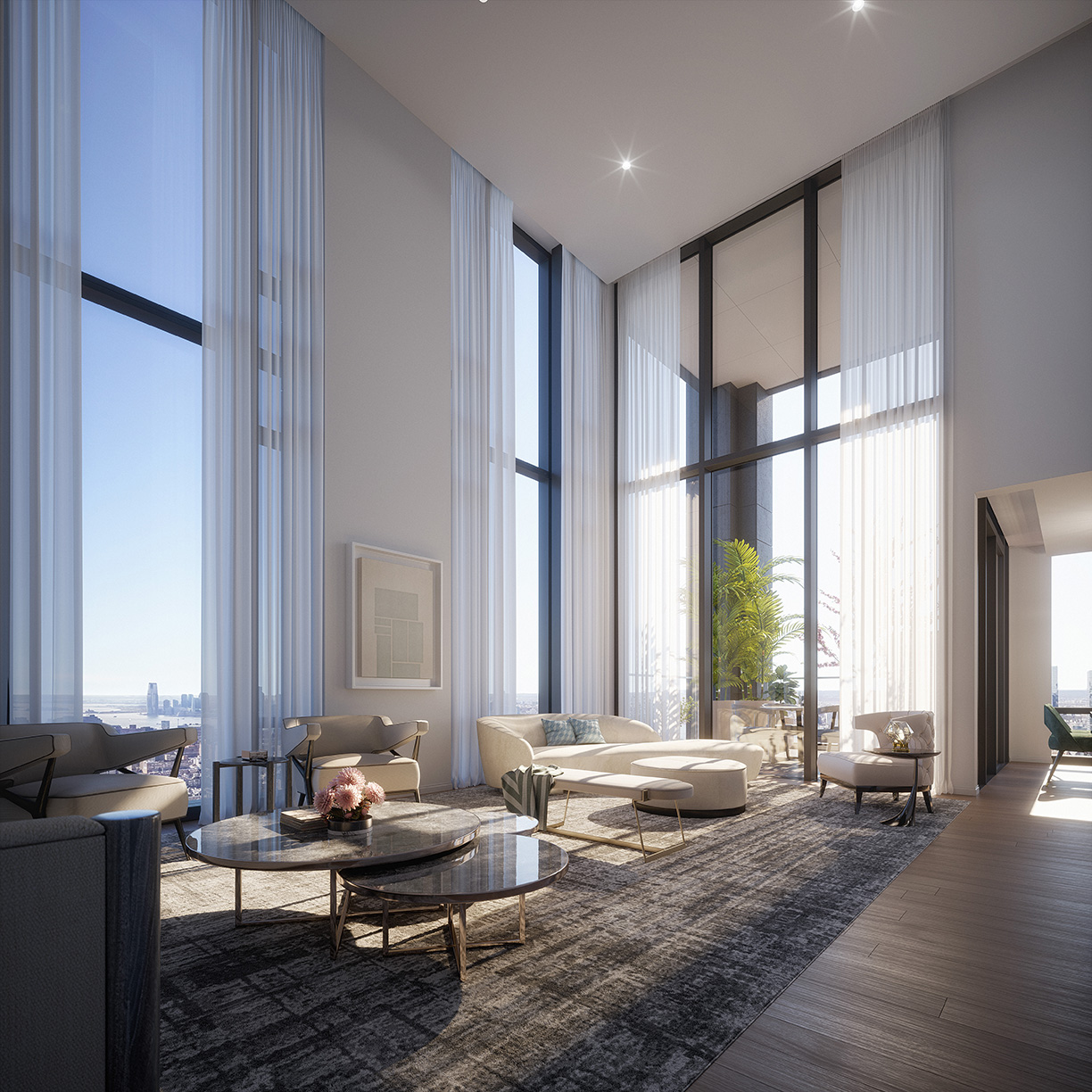
Photo courtesy of THREE MARKS
1. More Space
By adding more vertical space, high ceilings offer a spacious atmosphere for the individual to live in. The additional space adds a grander feel to the room, elevating the standard of luxury homes.
At 277 Fifth Avenue in New York City, the 13.5-foot ceilings provide a sense of grandeur and elegance, bringing an elevated sense of luxury to the residence. The light and airy curtains hanging from the top provide a sleek and stylish addition to the grand floor-to-ceiling windows.
1. Dazzling Views
In apartments and residential homes across the country, high ceilings can allow for even more windows, and therefore add spectacular views. With the potential of higher ceilings, floor-to-ceiling windows can provide spectacular views of the landscape before them.
At Summit New York, a private residential building located in the heart of Midtown Manhattan, the 15-foot ceilings allow for gorgeous views of the Chrysler building with the rest of the city in the background. The sheer height of the ceilings allows for a larger view, adding a dazzling feature to the home.
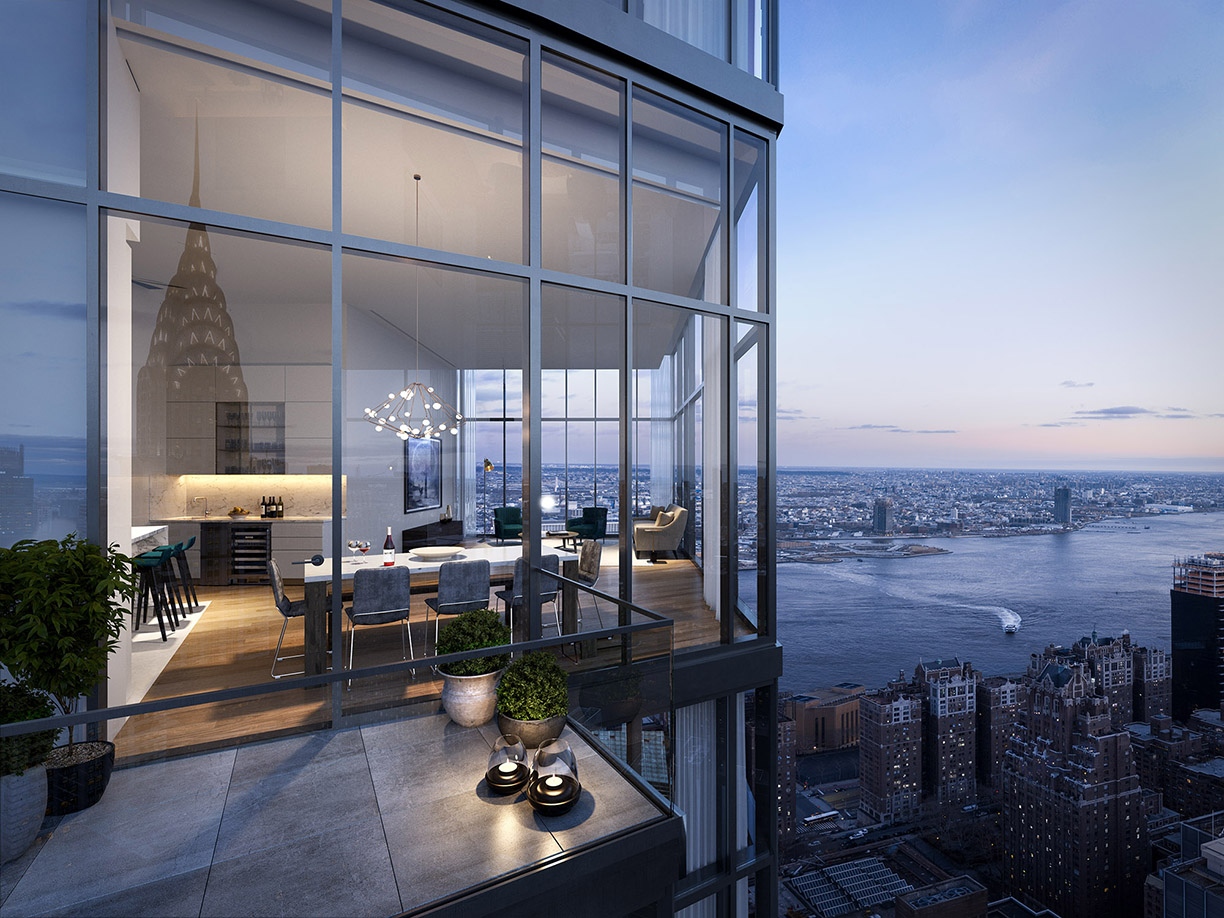
Photo courtesy of Summit New York
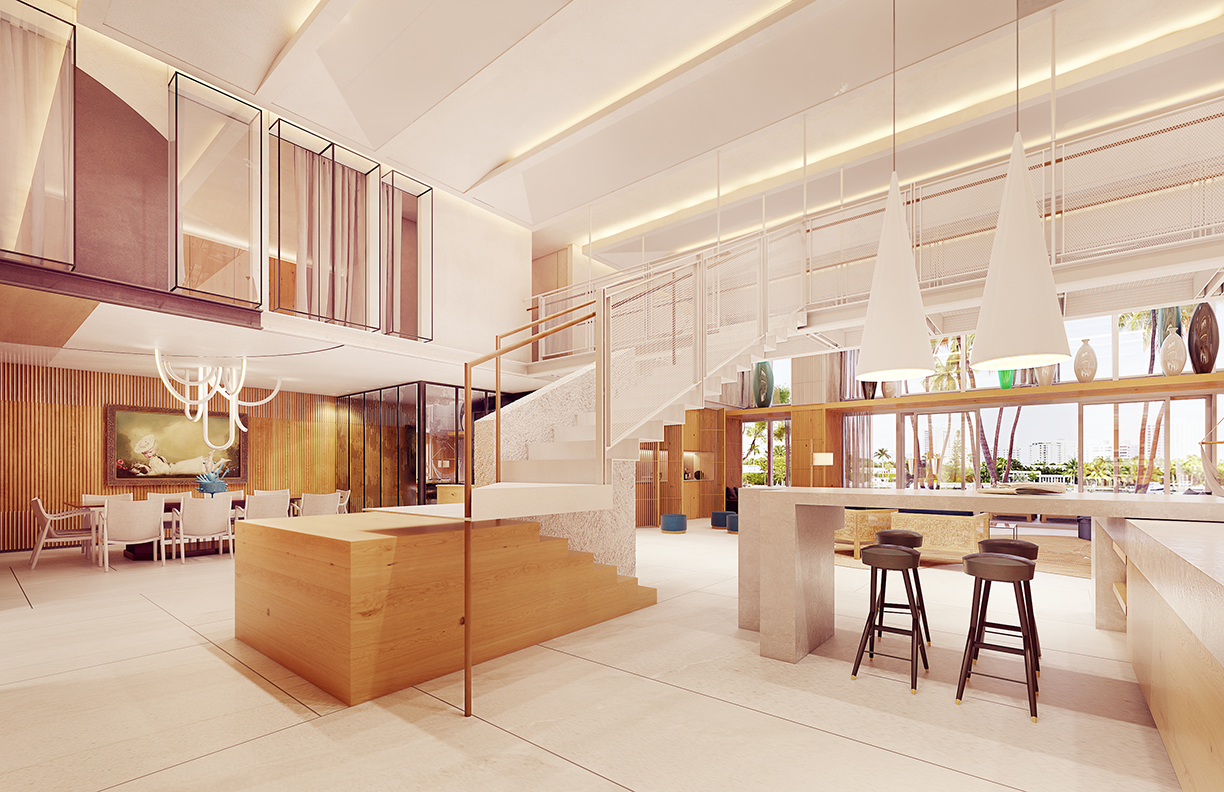
Photo courtesy of DooArchitecture
1. Creative Design
Although high ceilings include great benefits just by themselves, they also have added benefits for interior designers everywhere. Higher ceilings allow interior and architectural designers to get creative with the space they have available to them. Rather than creating a simple, high ceiling, designers have used their creativity to create spectacular pieces that can be the centerpiece of the space.
By using different materials and an eye-catching design, the designers have created a statement piece in the Ritz-Carlton Residences in Miami, Florida. They not only add a spacious and airy feel to the room, but its design allows for an artistic interpretation of the classic high ceiling.
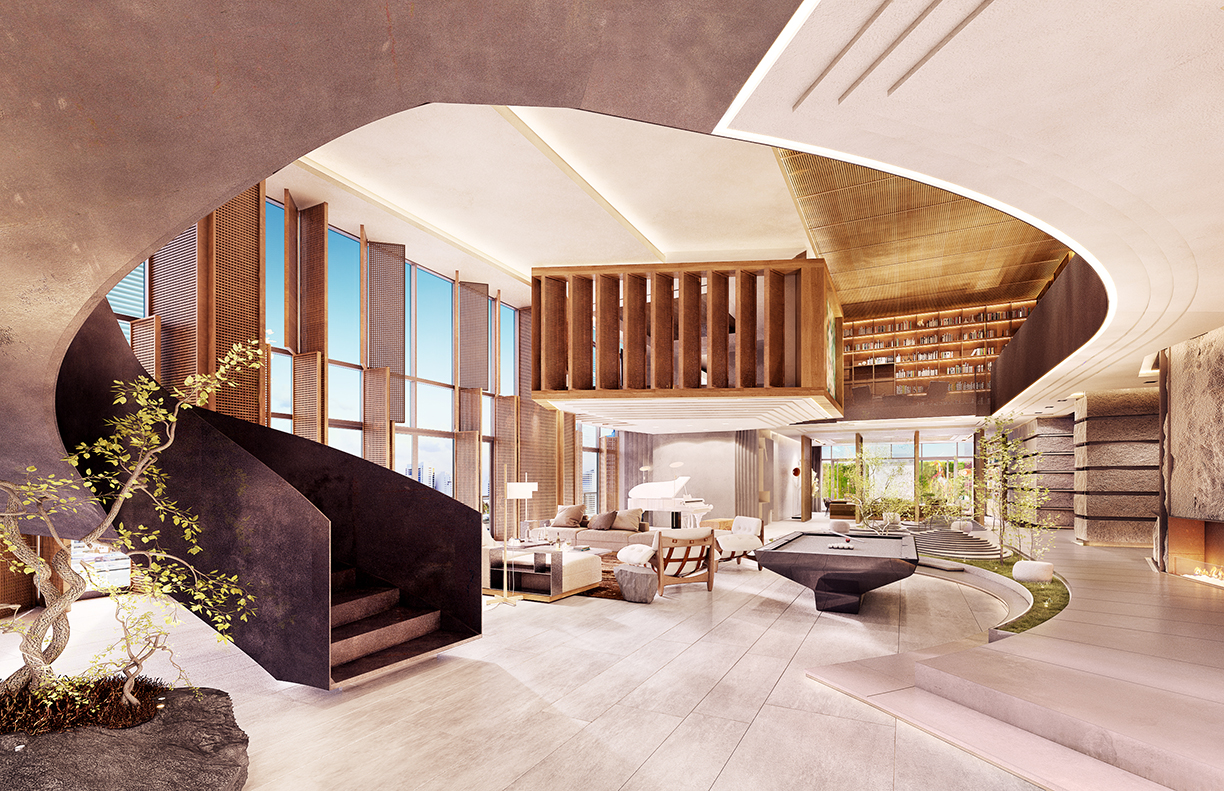
Photo courtesy of DooArchitecture
1. Wellness-Booster
Adding natural light and creating an uncluttered, airy atmosphere, high ceilings with tall windows can increase the wellness of the individual. And with wellness becoming a hot topic in the industry, high ceilings and tall windows can become the selling-point of the home. By 2017, the wellness industry was worth $4.2 trillion, according to the Global Wellness Institute — a jump of 12.8 percent from 2015. And as the industry’s worth only increases, higher, grander ceilings have the potential to be a decisive element to the home.
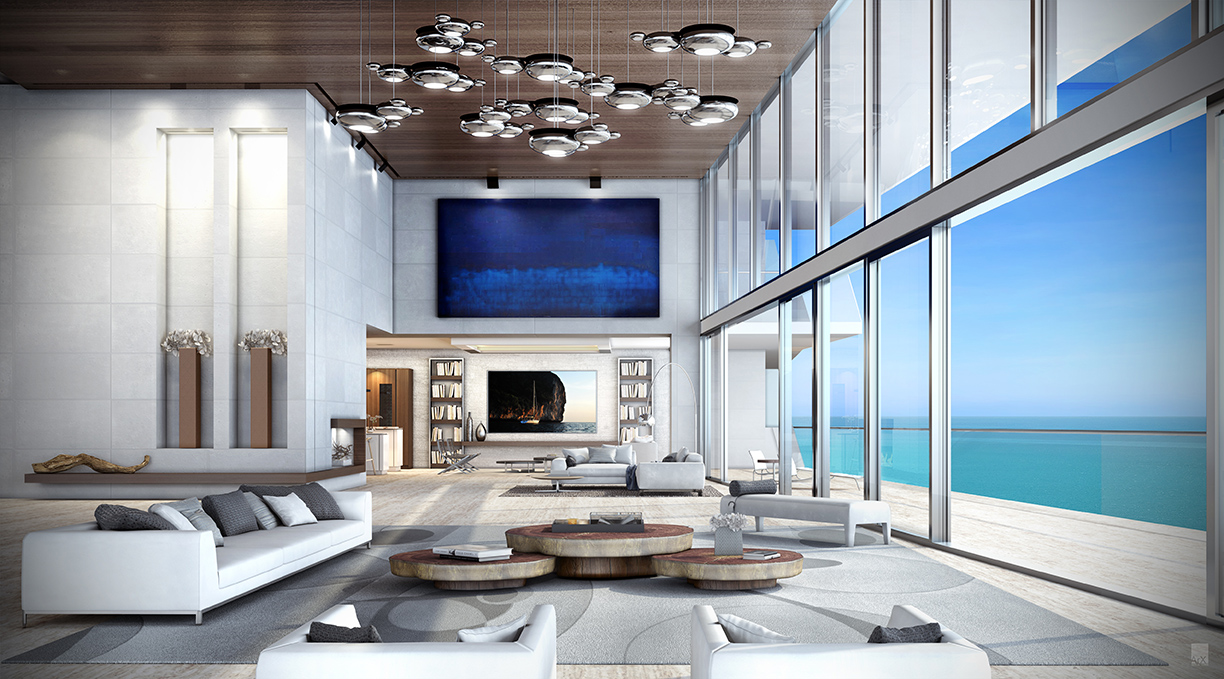
Photo courtesy of Turnberry Ocean Club
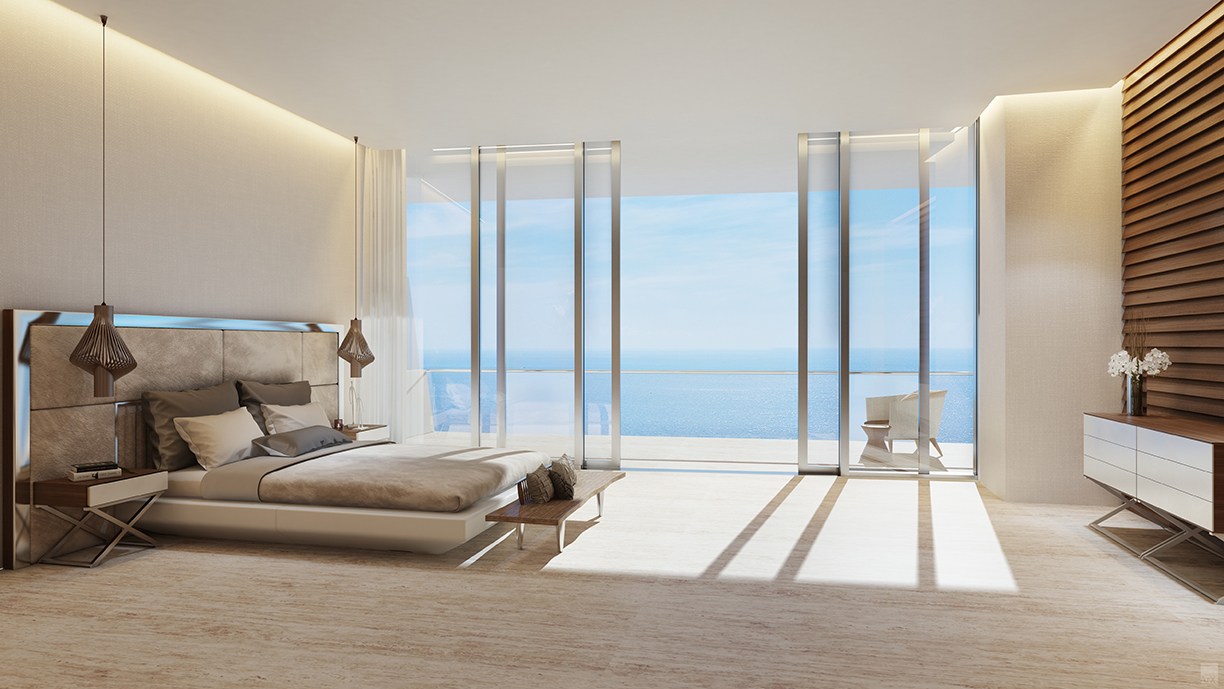
Photo courtesy of Turnberry Ocean Club
Traveling the world typically leads to atypical adventures, and the guides and experts behind the tours of Architectural Adventures are masters at giving adventure seekers unique experiences. One of its more “mystifying” adventures that showcases some of the most intriguing architectural wonders is the company’s “Discovering Mystical India” tour.
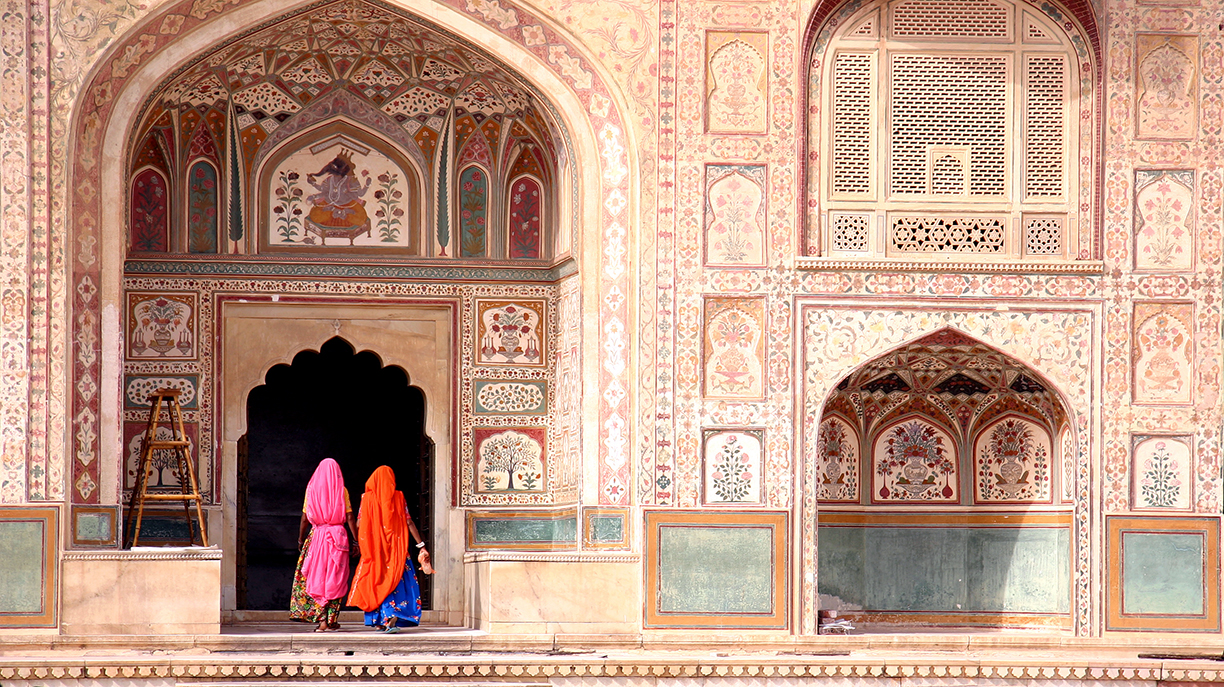
Photo courtesy AdobeStock 9468600
Tour travelers will get the chance to see what makes India mystical and spiritual while traveling through the classic Golden Triangle of cities: Delhi, Agra, and Jaipur. The important sights of both Old and New Delhi are sprinkled throughout the journey, which can be enjoyed via a rickshaw ride through colorful Chandni Chowk market. One can explore Hawa Mahal, the elaborately carved “Palace of the Winds,” whose pink sandstone façade allowed the ladies of the court to view the streets of the city from behind its 953 small windows. Take in a drive through Ranthambore National Park, with its picturesque ruins of forts and palaces, in search of elusive Bengal tigers and other wildlife. Speaking of forts, historical adventure seekers can take in Shahpura Haveli, a 300-year-old Rajput fort and palace complex with extensive courtyards, staircases, and arches that typify Indo-Saracenic architecture. Similar to the nature of the region, however, there is more to this tour than meets the eye.

Bahai Lotus Temple, New Delhi. Photo courtesy @diegograndi

Hawa Mahal, the Palace of Winds. Photo courtesy ©jura_taranik
“India is always known to be mysterious, charming and captivating,” notes tour leader Nitin Jain. “I think our guests are going to find India and their experience even more incredible than what they would have envisioned!” As the architectural expert on the tour, it is Jain’s hope to showcase both the rich historical and modern aspects of India that make it like almost no other place in the world. While he says no trip to India is complete without visiting Agra and Jaipu, Jain is especially intrigued to highlight the modern architectural marvels on the tour’s excursion to Le Corbusier’s Chandigarh.
Other architectural highlights include seeing India’s largest mosque, the red sandstone and marble Jama Masjid, exploring the Taj Mahal, and visiting Birla Mandir, the Hindu template made of pure white marble.
Being an architect who spent his formative years in India as well as someone who bridges the gap between an Indian as well as being an American, Jain affirms that he is perfectly, and uniquely, positioned to offer such a diverse perspective to guests. “My hope is to provide an enriching and fulfilling experience by showcasing India’s past, present and future as seen through its’ architecture and culture,” he says.

Photo courtesy ©Curioso Photography
Professor and author Mary Guzowski has a new architectural book debuting this summer entitled The Art of Architectural Daylighting. She recently sat down to discuss her interests in daylight as a building material and its importance in the architectural industry.
How can light affect the way a building is designed?
Lighting in buildings is dynamic, changing, and responsive… it’s not static. The building allows people to engage with it depending on how it’s designed — maybe walls open and close, or maybe sections of the home shut down depending on the season. Light is a literal building material.
What was your goal when writing “The Art of Architectural Daylighting?”
In the last decade there’s been a lot of new guidelines and standards, in particular a lot of new metrics around daylighting design that is more analytical. There’s a risk of ignoring the poetic aspect of daylighting. I wrote the book because I feel that it’s important to balance both.
I interviewed 18 architects and selected 12 interpretations of how to bridge the practical and poetic sides to daylighting. Each had different priorities, but there were patterns that I saw from interviews, which I structured into different categories in my book.
What about the process of putting this and the other books you’ve done do you enjoy?
I always write a book about things I want to learn about or don’t know. The most wonderful thing is talking with architects and engineers and learning how they do what they do. I love looking at patterns and trying to discern what other ideas might inform people and how I can be a channel for these patterns.
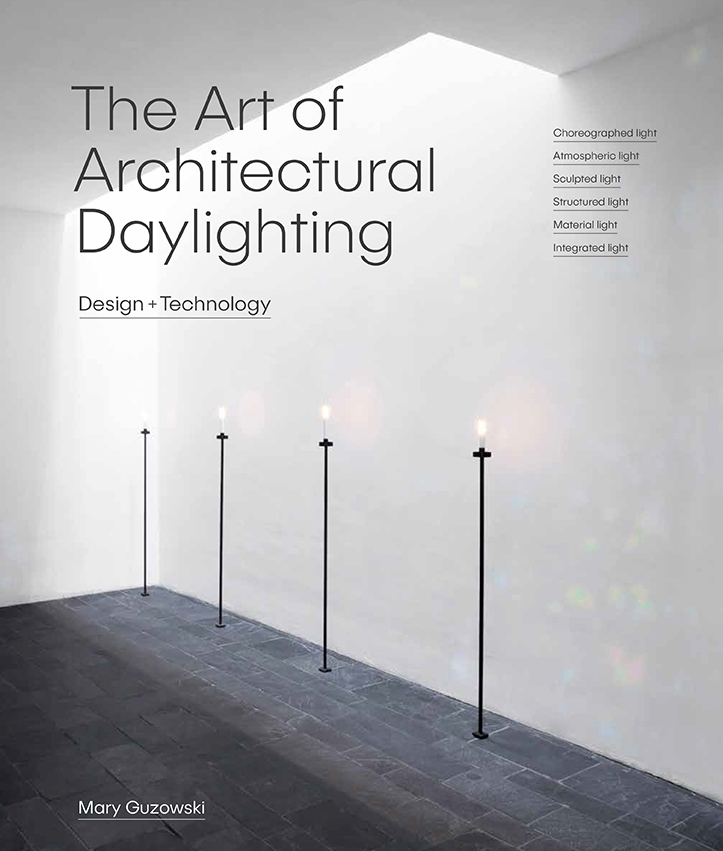
What lessons do you want readers to take from the book?
It was unanimous from all the architects that to study and understand daylighting it’s good to use physical models and put them outside, to understand the phenomenon of natural light. Many of the architects would start with small models and look inside to see how the light changed, experiment with texture and colors, then make mockups of full-scale spaces.
Guzowski has written other books regarding sustainability, including Towards Zero Energy Architecture: New Solar Design and Daylighting for Sustainable Design. She is a professor in the School of Architecture and helped design the MS in Sustainable Design at the University of Minnesota, as well as a co-author of the Carbon Neutral Design Project. The Art of Architectural Daylighting will be available for sale June 25th.














